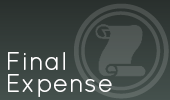What is life insurance?
When a person dies, there are many expenses that will need to be paid. These expenses may include such items as funeral costs, burial expense, current bills, and estate taxes. In addition, there may be financial needs the insured would have met if they had remained alive, including family living expenses, mortgage payments, long-term debt, and college costs for children. The Primary Function of a Life Insurance Policy is to provide, upon death of the insured, an amount sufficient to pay for any or all of the preceding costs and expenses. Which expenses or costs are to be provided for, and how much money will be needed is entirely up to the insured.
How much life insurance should I have?
There are many and varied needs for funds upon the death of an individual, and all must be taken into account to arrive at a proper amount of insurance. For simplicity, some authorities recommend a good rule of thumb to be five times your annual income. We can talk with you about your needs and goals, and illustrate how each item translates into a given amount of funds needed at the time of death. We also share how to account other sources of income (such as Social Security or retirement plans) that will actually lower the amount of life insurance necessary.
Who will receive money if I die? How much?
Upon death of the insured, the insurance company pays the policy’s benefit amount to the beneficiary (or beneficiaries) named by the insured on the policy. Some policies may provide additional benefits.
Does it matter how I die as to how much my beneficiaries will collect?
During the first two years of the policy period, there may be conditions (fraud, misstatement of age, suicide) that can affect the death benefit paid by the policy. After two years, the full policy death benefit is payable, regardless of the cause of death. (Some policies may also pay extra benefits in certain conditions, such as the insured dies in an accident.)
Will my beneficiaries receive the benefit in one lump sum, or will it be distributed over a period of years?
That is entirely up to you, or you can leave the decision to your beneficiaries. Both options are available.
Who can I name as my beneficiaries? How often can I change them?
Your choice of beneficiaries is entirely yours. You can name individuals, organizations or your estate. You can also change them at any time. The original beneficiaries under your policy, as well as any changes you later make, must be designated in writing to the insurance company, and attached to your policy by endorsement.
Are there different types of life insurance I should consider?
Although there are many types of life insurance policies, nearly all are variations of two basic types, term and permanent. (A third type, known as universal life, is a combination of term, permanent and various investment options. Its complexity is beyond the scope of our overview, but if you are interested, We can discuss if universal is a good fit for your life insurance needs and goals.)
- Term insurance is exclusively death coverage. The policies are written for a specific length of time (the term referred to in the name). Common terms are one year, five year and ten year, although longer terms may be available. If the insured dies during the term of the policy, the death benefit is paid to the beneficiaries. If at the end of the term the insured is still alive, the coverage ends.
- Unlike term insurance, a permanent insurance policy (often referred to as whole life) never terminates as long as the premiums are paid. It also builds cash values in the policy that can provide valuable living benefits in addition to the death benefit.
Do I have to die to collect life insurance?
For term insurance, the answer is always yes. For permanent insurance, as the living benefits accumulate, they may be used to provide funds for financial needs such as loans, premium payments and retirement benefits.
Will I ever need to requalify to keep my life insurance policy, as long as my premiums are paid on time?
For permanent insurance, no. For term insurance, if an insured wishes to continue the coverage beyond the specified term, many policies (known as renewable term) allow the insured to continue the coverage for another term of the same length, without any need to fill out a new application or undergo an underwriting review. This is a valuable provision, since the insured’s health or occupational status may have changed during the policy period in ways that would render them uninsurable if they were to try and purchase a new policy.
How do they set a price for life insurance?
Although there may be a myriad of fees, expenses, interest assumptions, and other factors used to develop a given life insurance company’s premiums for a policy, the rates for life insurance are ultimately based upon one factor the statistical chances of the insured dying in a given year. Such statistics, based upon insurance company experience and government records, are used to calculate an annual death cost for each $1,000 of life insurance benefit.
Since statistically few people will die at younger ages, the death cost for those years will be extremely low. As people age, the statistical chance of death increases slowly at first, then more rapidly after the insured passes middle age and therefore so does the annual death cost.
Which life insurance is less expensive, permanent or term?
Since term insurance only provides a benefit if the insured dies during the policy term, its premiums will be the closest to pure death cost. This is why term is the least expensive coverage to buy at younger ages. At older ages, however, the cost of a term policy rises rapidly along with the increasing death cost, and may soon become prohibitive for many senior citizens. A term insurance policy’s premium will remain the same during the term, and then increase at each renewal. For example, an annual renewable term policy is written for one year at a time, so the premium will generally increase each year. A five-year renewable term policy’s premium will remain level for the five-year term, and then increase at the renewal. Once renewed, the policy premium remains level until the next renewal, and so on until the renewal provision expires (typically at age 65), or when the insured either decides the premium has risen too high or the insurance is no longer wanted.
Permanent insurance rates are also fixed for the policy term. However, since the policy is permanent, this fixed premium must represent an average death cost over the entire expected life of the insured. The result is that permanent policy rates will be often be significantly higher than term rates at the younger ages, but then significantly lower at older ages.
If term life insurance is less expensive, why buy permanent?
There are many reasons. As food for thought, here are three of the key considerations:
- Permanent insurance will always be there. Some final expense needs are permanent, and only permanent insurance is guaranteed, assuming you pay the premiums, to be there when needed. Term insurance, by its nature, is temporary, and at some point will become nonrenewable. In fact, a good life insurance rule of thumb is to buy permanent insurance for permanent needs (funeral, burial, estate liquidity), and term insurance for temporary needs (mortgages, college costs).
- Permanent insurance premiums are fixed for life. While the premium may be higher at younger ages than term, it will never go up. And that can be a great comfort upon reaching older age and not having to face the possibility of your term insurance premium increasing beyond your ability to pay, possibly at the very time you need your insurance the most.
- Permanent insurance builds cash values. During those early years of your policy, when your lifetime average premiums are higher than the death cost, that extra money is set aside to help cover the higher death costs in later years. But in the meantime it is put to good use. In effect, it becomes a form of savings account inside your life policy. This cash value, as it grows, can be used as the basis for a loan from the insurance company, used to pay premiums if necessary, or taken as a cash settlement in the event you cancel the policy.
If I need to cash in my life insurance at some point, how much will it be worth?
If your policy is term insurance, it will have no value. Term only provides a death benefit. If your policy is permanent insurance, you will be eligible to receive the current cash values contained in the policy, whatever they may be at that point in time. We are able to show you sample charts illustrating your policy’s anticipated values for any particular year after your policy is issued.
Contact us today to get a policy that meets your security and financial needs.







